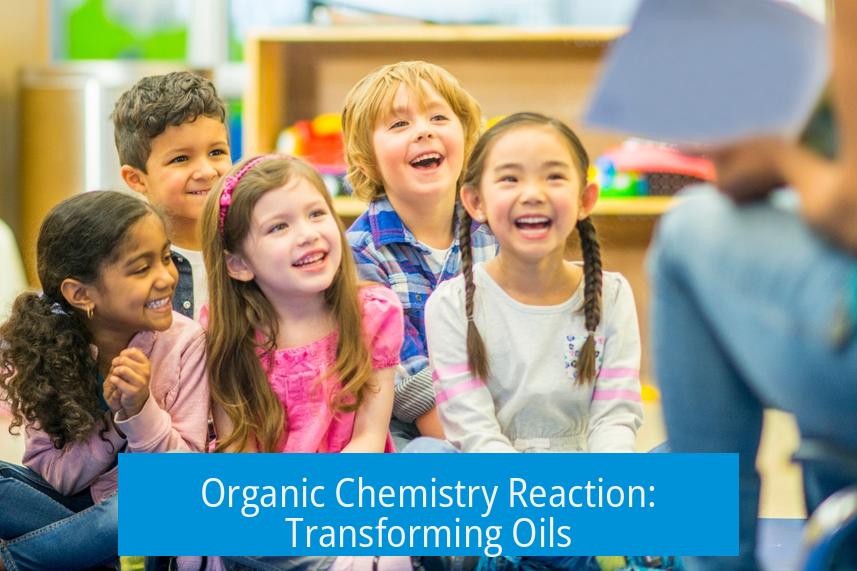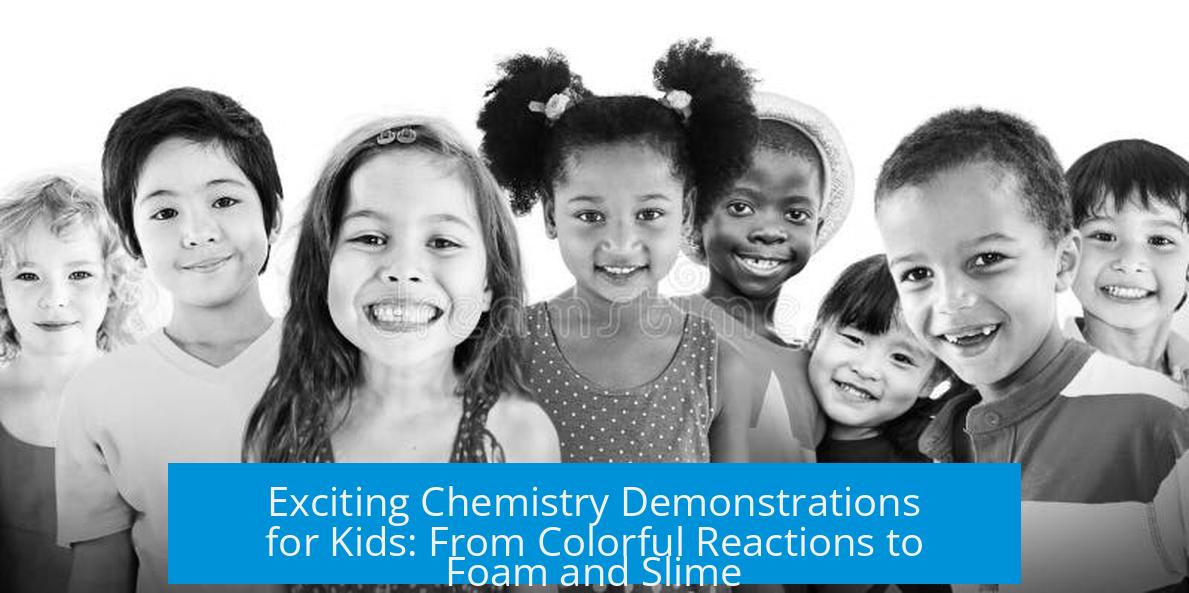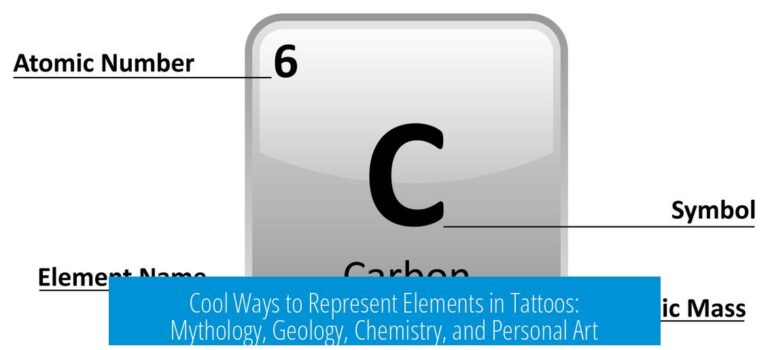Cool Chemistry Reactions to Demonstrate for Grades 8–12
Many exciting chemistry reactions beyond common demos like luminol and fake blood offer engaging, educational experiences. The following curated demonstrations balance safety, visual appeal, and meaningful chemistry concepts for students from 8th to 12th grade. These experiments foster curiosity and illustrate core chemical principles effectively.
Organic Chemistry Reaction: Transforming Oils

Show students how simple organic reactions can transform everyday substances. For instance, turning a colorless oil into a slightly funky-smelling, colorless product highlights chemical change without drastic visual effects but engages senses through smell. This example introduces the concept of oxidation or mild chemical modification of organic compounds.
Burning Ice Demo – Acetylene from Calcium Carbide
Demonstrate the reactive production of acetylene gas by sprinkling calcium carbide on ice. The reaction with ice’s water generates acetylene, which burns with a clean flame, making the ice appear aflame. This visually striking demo must be conducted with caution and is best suited for experienced instructors due to flammability and safety.
Golden Rain Reaction: Lead Iodide Precipitation
The “golden rain” showcases a vivid yellow precipitate of lead iodide. When aqueous solutions of lead nitrate and potassium iodide mix, they create lead iodide’s bright yellow particles settling slowly, resembling golden raindrops. This classic precipitation reaction visualizes solubility and ionic reactions well.
Extracting DNA from Strawberries

This hands-on experiment isolates visible DNA strands from strawberries using simple household materials. Mashing strawberries, adding a detergent solution, and precipitating DNA with cold ethanol allows students to see the molecular basis of genetics. It connects chemistry with biology and molecular science.
Ethanol Combustion Inside a Glass Jug
Coating the interior of a large glass jug with ethanol and igniting it creates an impressive blue flame lining the jug. It visually demonstrates alcohol combustion with minimal liquid. This is dramatic but safe under supervision, showcasing molecules reacting with oxygen to release energy.
Natural pH Indicator from Red Cabbage
Extract anthocyanins from red cabbage to create a natural pH indicator. It changes color across acidic, neutral, and basic solutions—red, purple, and greenish-yellow. This easy, non-toxic demo links acids, bases, and indicator chemistry while encouraging environmental awareness.
Liquid Nitrogen Effects on Everyday Objects
Freezing objects like roses with liquid nitrogen shows extreme temperature effects. The rose becomes brittle and shatters on impact. Evaporation of the nitrogen creates fog and awe. Though not a chemical reaction per se, it reveals physical state changes and introduces cryogenics.
Polyvinyl Alcohol and Borax Slime
Mix polyvinyl alcohol (PVA) and borax solution to form a slime polymer. This crosslinking reaction changes a liquid polymer into a viscoelastic gel. It explains polymer chains and bonding in an enjoyable, tactile form appropriate for younger and older students alike.
Silver Mirror Reaction with Tollens’ Reagent
The silver mirror test deposits metallic silver onto a glass container’s inner surface by reducing Tollens’ reagent (ammoniacal silver nitrate) with a mild aldehyde. The result is a shiny, reflective coating demonstrating oxidation-reduction reactions and metal deposition.
Alka-Seltzer Poppers: Gas Pressure Build-Up
Fill film canisters partially with water and Alka-Seltzer tablets, then cap them and place a ping pong ball on top. As CO2 gas builds, it ejects the ball explosively. This hands-on demo explains gas evolution and pressure increase.
Elephant Toothpaste: Rapid Foam Production
Decompose hydrogen peroxide catalytically (using potassium iodide or yeast), producing oxygen trapped in soap foam. This rapid decomposition generates voluminous foam resembling toothpaste extrusion on a giant scale. It teaches catalytic reactions and gas formation.
Baking Soda and Vinegar: Carbon Dioxide Generation and Flame Extinguishing
Mix baking soda (sodium bicarbonate) and vinegar (acetic acid) to produce CO2 gas visibly. Pouring the gas down a slope can safely extinguish candles by displacing oxygen. This reaction introduces acid-base chemistry and gas properties.
Hydrogen Gas Generation from Aluminum and Acid
React aluminum foil with dilute hydrochloric acid to produce hydrogen gas. Bubbling it through soapy water creates stable bubbles that can be safely ignited, producing a characteristic ‘pop.’ It clearly demonstrates metal-acid reactions and gas combustion.
Mercury-Aluminium Amalgam Formation
Use mercury to amalgamate aluminum, forming shiny, spindly metal structures as the metals combine. While scientifically fascinating in metal chemistry and alloying, this demo requires strict safety precautions due to mercury’s toxicity and is best reserved for advanced students.
Polystyrene Dissolution with Acetone
Dissolve chunks of polystyrene foam in acetone to rapidly shrink and compact the material. It illustrates polymer solubility and solvent interactions. This demo connects chemistry with material science and recycling concepts.
Generating Chemical Energy: Lemon Battery and Flash Cubes
Use lemons connected with copper and zinc electrodes to power a small capacitor that triggers ancient flash cubes. It demonstrates the conversion of chemical to electrical energy and finally to light and heat, linking chemistry with practical electronics.
Fluorescent Vitamin Riboflavin Under UV Light
Riboflavin solutions fluoresce brightly under UV light. Creative demos include squirting it through tubing or marking surfaces and tracking under UV. It teaches fluorescence, photochemistry, and real applications such as tracking or forensics.
Paper Chromatography to Separate Ink Components
Use coffee filters or chromatography paper with marker inks and isopropyl alcohol to separate colors. This simple technique reveals ink composition and molecular polarity. Coupled with fingerprinting, it links chemistry to forensic science.
Hydrogen Production from NaOH and Tin Foil
React drain cleaner NaOH with tin foil to generate hydrogen gas bubbles. Bubbling the gas into soapy water creates explosive bubbles that can be ignited. It reinforces metal-acid/base reactions and safely demonstrates hydrogen properties.
Blue Bottle Experiment: Oxygen Consumption and Color Change
This redox reaction uses a strong KOH solution with glucose and methylene blue indicator. Shaking turns the solution blue; standing causes it to fade. It vividly shows oxygen’s role and chemical equilibrium shifting color.
Crush-a-Can Physical Chemistry Demo
Boil a small amount of water inside an empty soda can, invert it into cold water, and watch atmospheric pressure crush it. The demo illustrates vapor condensation, pressure change, and physical forces in action.
Weakening an Aluminum Can via Copper Sulfate
Soak or scratch the liner of an aluminum can and expose it to copper sulfate solution. The copper ions replace aluminum ions, weakening the can walls. This enables students to witness metal displacement in practice and then tear the can easily.
Soap Making from Vegetable Oil and NaOH
Prepare simple soap by reacting vegetable oil with sodium hydroxide. The saponification process produces soap and glycerol. This connects organic chemistry with everyday products through a tangible synthesis.
Plastic Stopper Launch Using KMnO4 and H2O2
Mix potassium permanganate with hydrogen peroxide in a flask sealed with a plastic stopper. Oxygen gas evolution builds pressure, ejecting the stopper like a cannon. This demonstrates gas production kinetics and reaction rates dramatically.
Sugar to Charcoal via Sulfuric Acid
Add concentrated sulfuric acid to sugar. It dehydrates sugar molecules, releasing water and leaving carbon-rich black charcoal residue. This vivid blackening reaction teaches about strong acid dehydration and chemical energy transformation.
Thermite Reaction: Molten Metal Production
Combine powdered aluminum with a metal oxide (e.g., iron(III) oxide). When ignited, this highly exothermic reaction produces molten iron and aluminum oxide. The molten metal drips visibly, illustrating redox reactions and metal extraction reactions. Given high temperature and sparks, this demo requires careful supervision.
Bright Flash from Aluminum and Oxidants
Mix powdered aluminum with strong oxidizers like sodium perchlorate or potassium permanganate. Ignition causes bright flashes, simulating pyrotechnic sparks. This reaction also conveys combustion and energetic materials theories.
Nylon Rope Trick: Interface Polymerization
Create nylon by carefully layering hexamethylenediamine over adipic acid solutions. At their interface, polymerization forms a continuous nylon thread that can be pulled into a rope. This demonstration physically manifests step-growth polymerization.
Dry Ice and pH Indicator Color Change
Drop dry ice (solid CO2) pellets into a dilute strong base solution containing a universal pH indicator. The solution gradually changes color as CO2 dissolves and acidifies the medium. The dense mist formed overflowing from the flask adds theatrical effect.
Flame Tests: Metal Ions and Colorful Flames
Burn salts of copper, iron, sodium, or strontium to display characteristic flame colors. This classic demo connects atomic electron transitions with visible spectral colors, offering insight into quantum theory and element identification.
Rainbow Connection: Multicolor Chemical Reactions
A sequential demonstration using various metal ion solutions reacting with reagents to produce shifting vivid colors choreographed to music. It visually links chemistry, balancing reactions with art and engagement.
Dry Ice and Water Vapor Effects
Add dry ice pieces to water for visible CO2 fog clouds. Placing a bottle in the mixture concentrates the effects. This demo illustrates sublimation and gas behavior in an accessible way.
Perovskite Nanoparticles Synthesis
Mix lead halide solutions to precipitate perovskite nanoparticles that fluoresce green under UV light. This modern materials experiment introduces concepts in nanotechnology and photoluminescence in simple steps.
Sodium Metal on Water
Demonstrate the vigorous reaction of sodium metal with water producing hydrogen gas and sodium hydroxide. It’s a dramatic and exothermic reaction but requires strict safety measures due to its volatility and reactivity.
Electrochemistry Demonstrated by Potato Battery
Insert two different metal electrodes (e.g., dime and nickel) into a potato. Measure voltage and current generated as the potato’s electrolytes facilitate electron flow. This experiment bridges chemistry with energy and electrochemical principles.
Boiling Water and Phase Change Concepts
Boil water while explaining phase changes, boiling point elevation by salt addition, and how these concepts relate to real-world applications like steam engines or energy production. Demonstrations can include vapor volume measurements to quantify gas expansion.
Colorful Transition Metal Equilibrium
Experiment with transition metal ion solutions whose colors shift upon adding reagents that alter ligand environments, demonstrating equilibrium shifts in coordination chemistry. This is suitable for older students with some background knowledge.
Sublimation and Dry Ice Pressure Demonstration
Combine warm water and dry ice in a soda bottle sealed tightly. The sublimation of CO2 increases pressure until the bottle bursts or moves rapidly. This illustrates gas laws and phase transitions dramatically but safely outdoors.
Ink Chromatography as a Hands-On Exercise
Separate ink components from various black markers on paper strips using isopropyl alcohol. Multiple colors emerge based on dye polarity. This introduces molecular separation and analytical chemistry practically.
Firework Flame Colors with Metal Salts
Burn small droplets of metal salt solutions to display characteristic flame colors. These salts mimic fireworks colors and teach photochemistry and emission spectra. Use proper lab safety and ventilation.
Mentos and Soda Geyser
Drop Mentos candies into carbonated soda to rapidly release dissolved CO2, creating an explosive geyser. This physical reaction teaches gas solubility and nucleation sites, but is best done outdoors due to mess.
Metal Rod Heating and Root Beer Degassing
Heat a metal rod and then immerse it rapidly into root beer, causing vigorous fizzing and foam eruption due to rapid degassing. This connects physical and thermal chemistry in an entertaining way.
pH Indicator Titrations
Conduct simple acid-base titrations using natural or synthetic pH indicators. Dropwise addition of acid or base causes instantaneous color changes, demonstrating neutralization and pH concepts interactively.
Polyacrylate Water Trapping Trick
Demonstrate polymer water retention by mixing polyacrylate crystals and water in cups. Pouring water over volunteers’ hands, which remain dry, shows polymer absorption capacity unusually. This connects polymer science with real-life applications.
Heating and Crushing a Used Cola Can
Heat a used cola can with residual water over a flame then immediately invert into cold water. Rapid condensation inside creates a vacuum that crushes the can. The demo illustrates vapor pressure, phase change, and atmospheric pressure effects.
Physical Chemistry with Cornstarch
Explore non-Newtonian fluid properties by mixing corn starch and water (oobleck). Under stress, the mixture behaves like a solid; when relaxed, like a liquid. This introduces concepts of material properties beyond classic states of matter.
Summary of Cool Chemistry Demonstrations
- Organic oxidation of oils shows chemical transformation without color change.
- Burning ice emits acetylene flames from calcium carbide and ice.
- Golden rain precipitates lead iodide to form bright crystals.
- DNA extraction reveals molecular biology chemistry using strawberries.
- Ethanol combustion in glass jugs creates flaming interior coatings.
- Natural pH indicator from cabbage shows acid-base color changes.
- Liquid nitrogen freezes objects for dramatic physical state changes.
- Polymer slime demonstrates crosslinking and polymer structures.
- Silver mirror oxidation-reduction covers metal deposition reactions.
- Alka-Seltzer poppers excite gas pressure and reaction rate learning.
- Elephant toothpaste produces foam from rapid hydrogen peroxide decomposition.
- Baking soda and vinegar reaction generates CO2 for gas experiments.
- Hydrogen from aluminum and acid shows metal reactivity and gas formation.
- Polymer dissolutions and amalgams teach about materials and alloys.
- Bright pyrotechnic flashes reveal combustion and oxidation reactions.
- Nylon rope trick manifests polymerization physically.
- Flame tests display elemental emission spectra colors vividly.
- Chromatography and titrations connect chemistry with forensic and analytical fields.
- Demonstrations with dry ice illustrate sublimation and gas properties theatrically.
- Electrochemical batteries from potatoes link chemistry and energy harnessing.
These demonstrations provide a broad spectrum of chemistry—from organic to inorganic, physical to analytical—allowing educators to select demos that meet curriculum needs and engage students with hands-on discovery.
What simple chemical reaction can show gas production and a popping effect for students?
Alka Seltzer poppers are great. Put Alka Seltzer and water in film canisters, cap them, and place ping pong balls on top. The gas builds up pressure and launches the balls, making it an exciting demo.
Is there a fun and colorful reaction to teach polymers to children?
Making slime with polyvinyl alcohol and borax is a classic. It shows crosslinking in polymers and is hands-on and enjoyable for students of various ages.
Can you suggest a visual demonstration involving metal and a chemical mixture?
Try the silver mirror reaction using Tollens’ reagent. It produces a shiny silver coating on glass, showing metal deposition in an engaging way.
What dramatic reaction involves hydrogen gas safe enough to light in bubbles?
Generate hydrogen by mixing aluminum foil and dilute acid. Bubble it through soapy water to trap hydrogen in bubbles, then carefully light them. It’s a visually impressive experiment.
How can I show natural indicators and pH changes using everyday items?
Use red cabbage juice as a pH indicator. It changes color across the pH scale and is easy to prepare, making acid-base chemistry accessible and colorful.





Leave a Comment